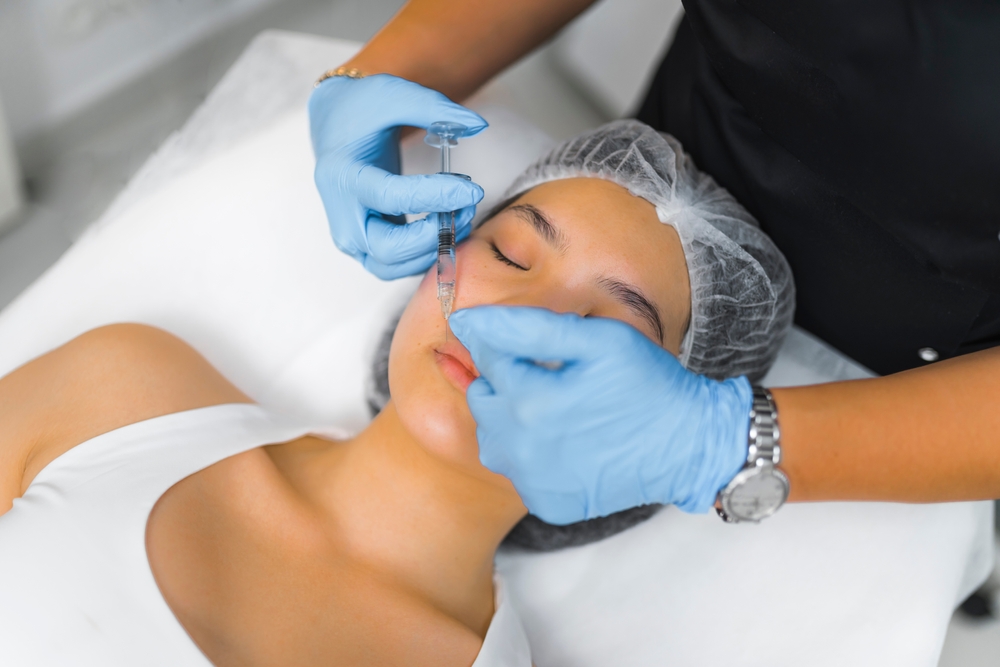Understanding the Hidden Risks of Dermal Fillers
In a distressing incident last month in Singapore, a woman lost her vision following a dermal filler treatment. This unsettling event has brought attention to the lesser-known risks of dermal fillers, beyond the known issues like blood vessel blockages. Here’s a closer look at what happened and other potential risks that may not be on everyone’s radar.
Tragic Incident: Sudden Blindness After Dermal Filler Treatment
In an unprecedented local event, a woman suddenly went blind in both eyes after getting treated with AestheFill, a well-liked dermal filler used for reducing wrinkles and skin folds.
The distributors and health authorities in Singapore are working tirelessly to figure out what led to this devastating outcome. This alarming incident highlights the need for greater awareness and conversation about the possible risks tied to dermal fillers.
1. Allergic Reactions to Hyaluronic Acid Dermal Fillers
Though dermal fillers like those made from hyaluronic acid (HA) are generally deemed safe and are popular for cosmetic enhancement, a minority might face delayed allergic reactions. These unforeseen reactions may emerge weeks to months post-treatment, leading to extended swelling and discomfort, triggered potentially by infections, trauma, and certain injection techniques.
The Mechanism Behind the Reactions
The delayed swelling is believed to be a result of a Type IV hypersensitivity reaction, initiated by T-lymphocytes and mediated by CD4+ cells. This reaction is exacerbated by influenza-like infections, activating an immune response that can lead to hypersensitivity.
Furthermore, the molecular weight of HA plays a significant role in determining its inflammatory potential, with lower molecular weight HA being more pro-inflammatory.
COVID-19 and Hypersensitivity to Fillers
The emergence of COVID-19 has brought new concerns to light. The virus itself, and vaccines developed to combat it, could potentially act as triggers for delayed-type hypersensitivity in patients with HA dermal fillers.
This is due to the virus’s and vaccine’s ability to activate the immune system, potentially leading to an inflammatory response in individuals with dermal fillers.
Researchers have observed a potential link between SARS-CoV-2 infection and increased hypersensitivity reactions in filler patients. The virus causes lymphopenia and functional exhaustion of lymphocytes, possibly contributing to delayed hypersensitivity presentations.
In managing these reactions, healthcare providers must exercise caution, especially in the context of the pandemic. Treatments like steroids, used for managing hypersensitivity reactions, must be administered judiciously to avoid dampening the immune response necessary to fight off viral infections.
2. Infection Risk
Though rare, infections at the injection site can occur, potentially causing more severe complications. One study has shown that bacterial infection can occur in 0.04% to 0.2% of dermal filler procedures, leading to cellulitis, abscess formation, or systemic infection.
Prevention: The First Step
Preventing infections begins with a comprehensive patient assessment. Identifying high-risk individuals, such as those with uncontrolled diabetes or a history of complications associated with soft tissue fillers, is essential. Proper site and material preparation, along with the use of topical disinfectants like isopropyl alcohol or chlorhexidine, further minimise infection risks.
Early Signs of Infection
Infections may manifest early as erythema, swelling, and itching, often self-limiting but requiring close monitoring. Typical early infection symptoms, appearing days post-procedure, include pain, acne papule formation, or nodule formation at the injection site. These are generally caused by bacterial infections from skin organisms.
Management of Infections
Suspected infections necessitate immediate antibiotic therapy targeting common gram-positive organisms. Continual patient monitoring is vital, and a lack of improvement within 48 hours should prompt further diagnostic procedures, such as a punch biopsy. In cases of resistant or unclear infections, consideration for other microorganisms or biofilm involvement is essential.
Biofilm-Related Infections
Biofilm formation on the filler surface, leading to protection and latency of bacteria, can result in unpredictable and chronic recurrence of infections, especially with deep injections. Effective biofilm infection management includes removal of foreign material, early administration of sensitive antimicrobial therapy, and possibly incision and drainage.
Managing HA Filler Infections
For HA filler-related infections, post-incision and drainage management may involve hyaluronidase administration, avoiding prior injection to prevent bacterial diffusion in active cellulitis cases. Differentiating between hypersensitivity reactions and infections is crucial for appropriate treatment, with imaging serving as a valuable diagnostic tool.
3. Tissue Necrosis
Incorrectly administered fillers can block blood vessels, leading to tissue death. One study reports that vascular complications from dermal fillers can lead to skin necrosis, which is often overlooked and underreported.
Dermal filler injections have grown in popularity due to their effectiveness and safety. However, adverse events, although rare, can occur, leading to serious functional and aesthetic deficits. One such adverse event is tissue necrosis, usually resulting from direct injection of the filler into a blood vessel.
Symptoms
- Blanching or Pallor: Indicates arterial occlusion.
- Red or Bluish Discolouration: Suggests venous congestion.
- Severe Pain and Discolouration: Appears in the distribution of the occluded vessels.
Risk with Rhinoplasty
Patients with a history of rhinoplasty, especially in Asia where it is highly popular, may have an increased risk of ischemia, necrosis, and vascular embolism following filler injection. This is due to unpredictable repositioning of blood vessels and a more tenuous blood supply in the operated nose.
Treatment
Hyaluronidase enzyme administration effectively reversed the effects of hyaluronic acid filler in most patients in the study. Other treatments include warm compress, massaging topical nitroglycerin paste into the area, and introducing an oral aspirin regimen.
Final Thoughts: Ensuring Safe Dermal Filler Treatments
The recent incident in Singapore highlights the crucial importance of awareness and understanding regarding the potential complications, including the lesser-known ones, associated with dermal fillers.
It’s imperative for individuals to be thoroughly informed and for healthcare providers to exercise the utmost caution to ensure the safety and well-being of patients undergoing these treatments. The allure of dermal fillers comes hand in hand with a responsibility to comprehend and mitigate the risks involved, safeguarding the pursuit of beauty without compromising health and safety.
References
- Van Dyke, S. (2010, May 1). Severe Acute Local Reactions to a Hyaluronic Acid-derived Dermal Filler. PubMed Central (PMC). https://www.ncbi.nlm.nih.gov/pmc/articles/PMC2922715/
- Rowland-Warmann, M. J. (2021, April 1). Hypersensitivity reaction to Hyaluronic Acid Dermal filler following novel Coronavirus infection – a case report. Journal of Cosmetic Dermatology; Wiley-Blackwell. https://doi.org/10.1111/jocd.14074
- Ferneini, E. M., Beauvais, D., & Aronin, S. I. (2017, January). An Overview of Infections Associated With Soft Tissue Facial Fillers: Identification, Prevention, and Treatment. Journal of Oral and Maxillofacial Surgery, 75(1), 160–166. https://doi.org/10.1016/j.joms.2016.09.004
- Robati, R. M., Moeineddin, F., & Almasi-Nasrabadi, M. (2018, January 11). The Risk of Skin Necrosis Following Hyaluronic Acid Filler Injection in Patients With a History of Cosmetic Rhinoplasty. Aesthetic Surgery Journal, 38(8), 883–888. https://doi.org/10.1093/asj/sjy005














